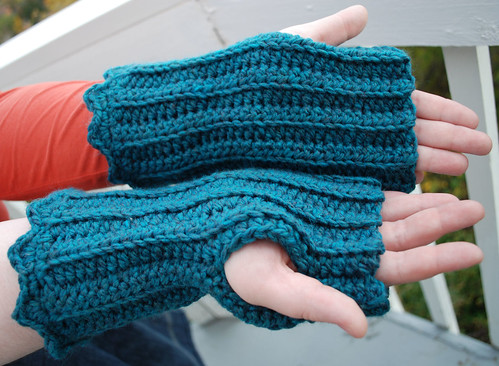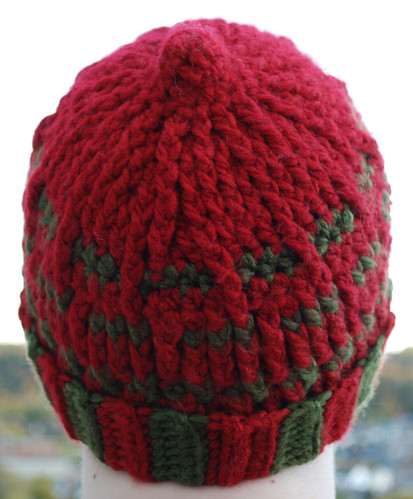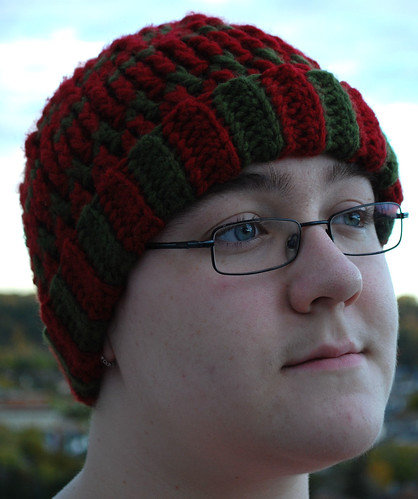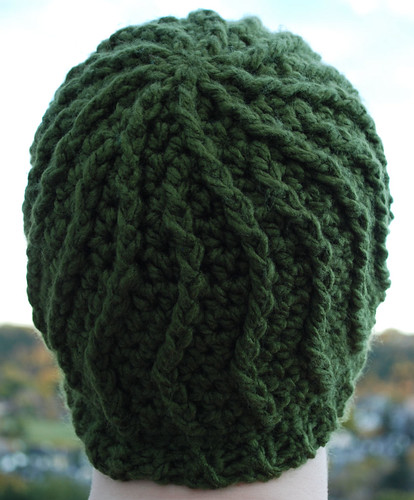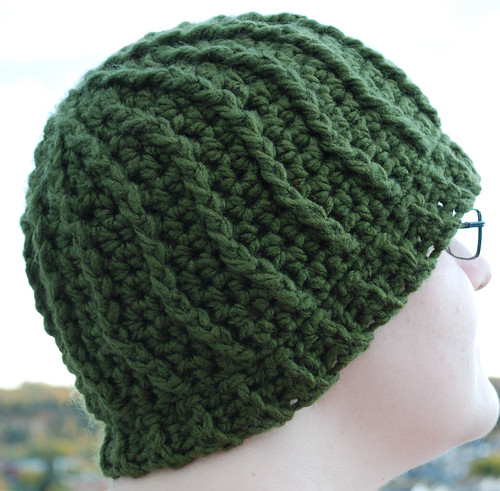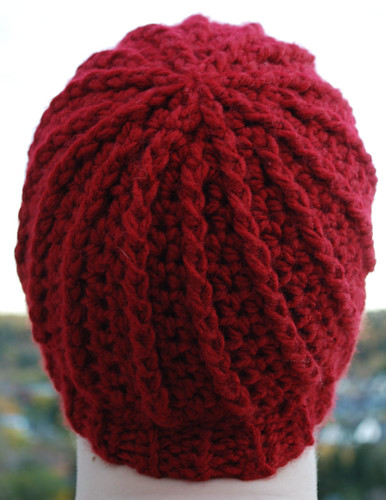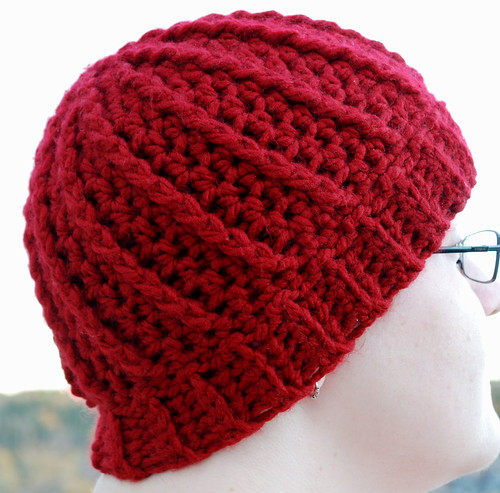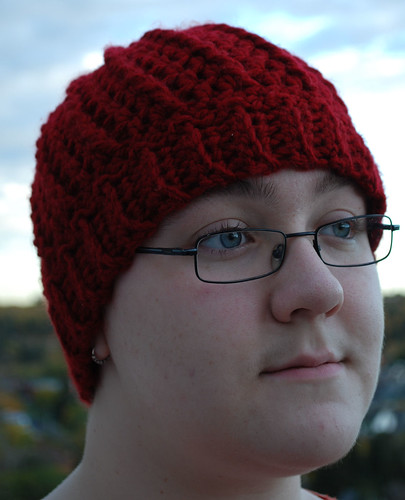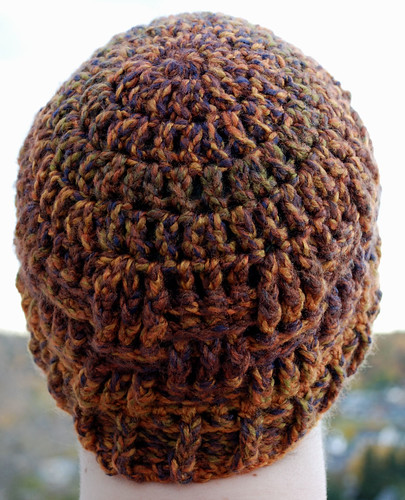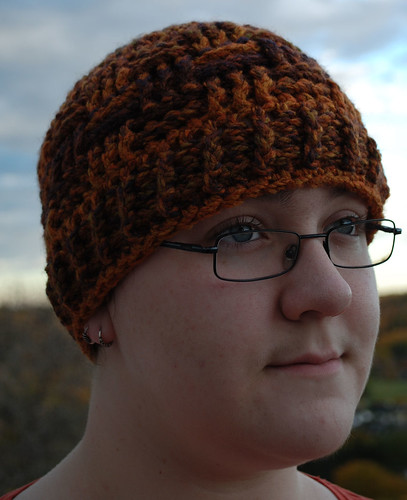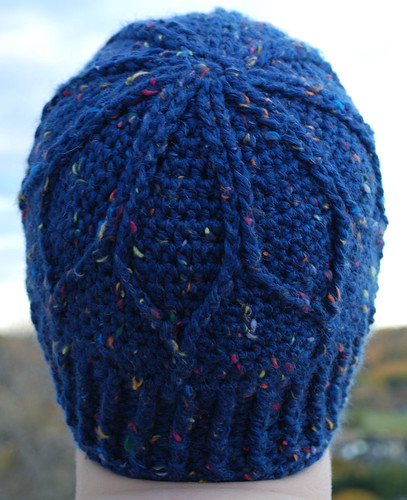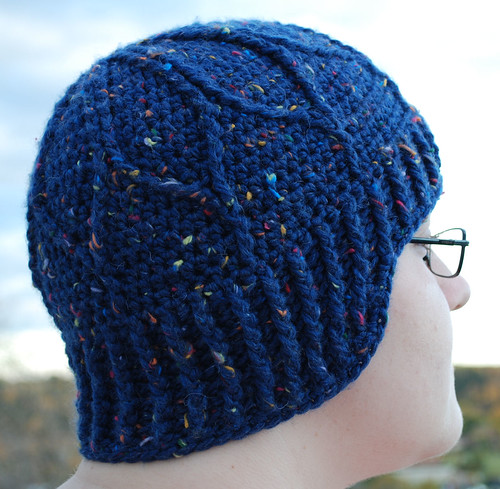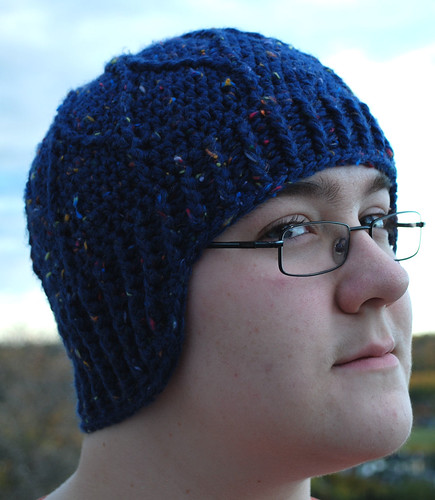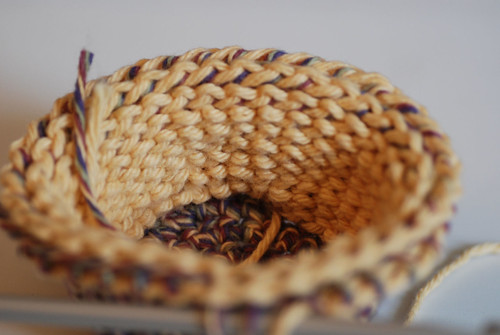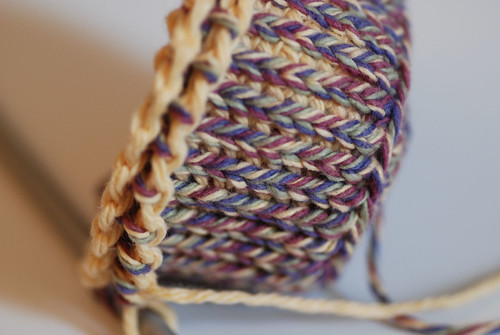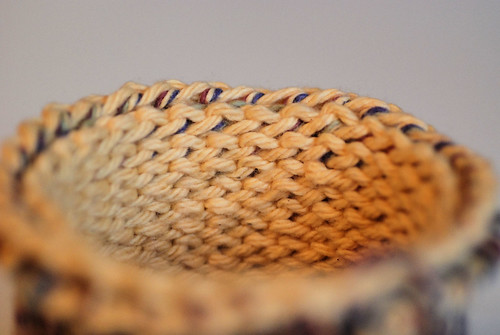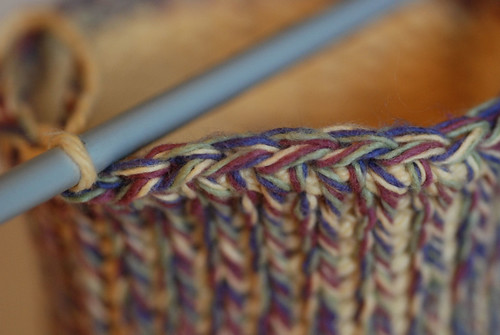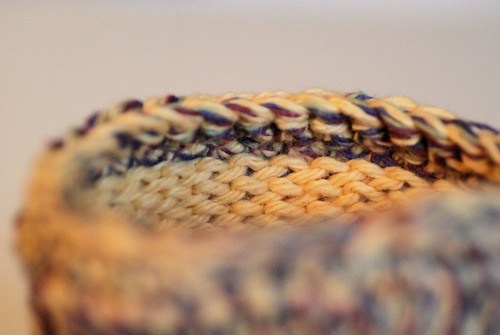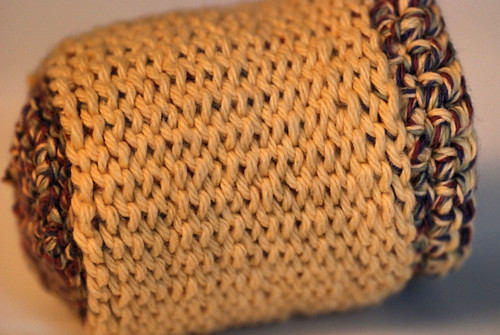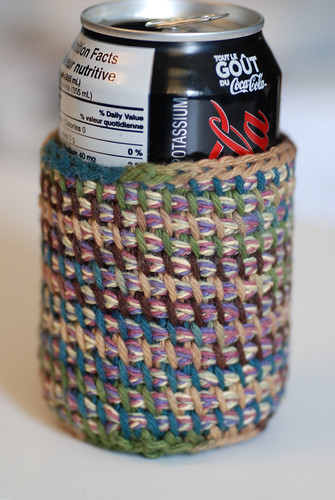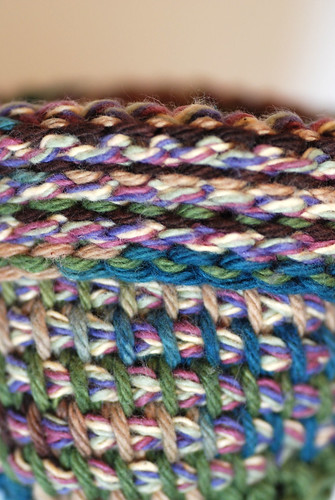I'm finally starting up my Feature Fridays again. If there is any craft or artist you'd like to see featured here, feel free to mention it in the comments.
Sharon Silverman shared a video on nalbinding a while back, and I've been experimenting with it ever since - with questionable success!
Nalbinding, naalbinding, nalebinding or Nålbinding is an ancient pre-cursor to knitting. The name literally means "needle binding" or "binding with a needle."
Nalbinding needles are flat and fairly wide, with a large hole, though a large yarn or tapestry needle can be substituted. Using needle, yarn and your thumb, yarn loops are bound together to create an
array of useful garments and other items.
After looking around a fair bit, the site I found myself using the most is
Viking Girl's Workshop. The
instructional videos linked to were the ones I found the clearest, even if I couldn't understand any of the spoken instructions.
Here are a few of my experiments.

I did these before I found Viking Girl's site, using videos I found by searching on youtube. The very first ones I tried were using some Handicrafter cotton, and they really sucked. *L* I would have taken pictures to show just how badly they turned out, but they seem to have disappeared. No loss, there! ;-D
I then used some left over chunky yarn and tried again. It was definitely easier with the thicker yarn. In the photo are pairs done in different stitches, with the shorter lengths (2nd, 4th and 6th from the top) done earlier. They're laid down to show both sides of each stitch. The top two are done in
Oslo stitch - the most basic stitch. The second pair are done in
Asle stitch, though I may have been doing it wrong - two different videos are showing me two different ways to grab the loops in the back. The final pair on the bottom was done in
Broden's stitch. Click on the images to go to my flickr page and see closer views of each pair.
The next attempt was made using some leftover Lion's Brand Wool-Ease Thick & Quick and the biggest yarn needles I could find.

I was definitely getting the hang of the basic movement, though I am still having problems with tension. I think the main reason is that, using yarn needles instead of the flat nalbinding needles, the loops are simply too tight. Until I find some proper nalbinding needles, I'll have to learn how to compensate for that.
The video I was following went on to show how to work the piece into a loop, so I gave that a try, too.
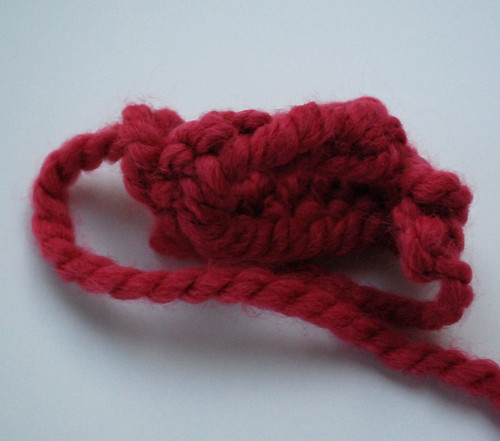
Unfortunately, I goofed and ended up putting a twist in it. That would be fine if I were making a moebius shawl or something, I suppose.
One down side of nalbinding. If you're not happy with what you're working on or make a mistake, the piece can't be ripped like you can with knitting or crochet. The yarn would need to be undone one loop at a time.
I started over with a new piece of yarn.
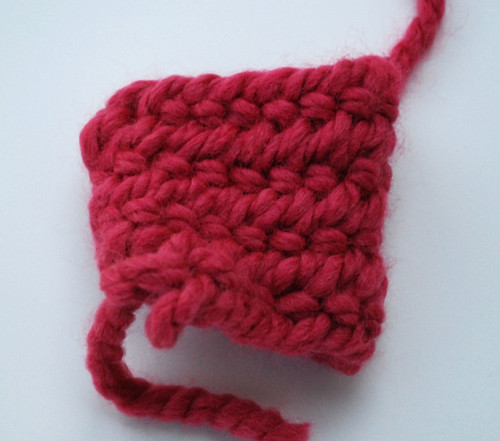
I got it right this time. This view shows the starting end of the piece. It's not really visible in this photo, but I think I attatched the working end to the start in the wrong loops, as the starting end was sort of flapping around.

This view shows where I stopped near the end of my yarn.
I'm kind of liking this. I've got a lot more to figure out before I can make anything useful. One thing I'll need to learn is how to work in a new strand of yarn. Looking at the instructional video I was following for this piece, I could see that there was a lot of yarn somehow attached into the end of her needle, but I couldn't see in what way. Because the entire length of the yarn has to pass through the loops, the working yarn needs to remain short. Her yarn was looped somehow to keep the working length short, yet still have a whole lot of yarn to work with. I used maybe a 10 foot length for the pink piece worked in the round and, as you can see, that doesn't go very far. Considering that I'm working this way too tight, it would go even faster if I were doing it right.
I'll definitely be working with this technique some more. I'm definitely screwing up somewhere when I try to work anything but the Oslo stitch, but as I look closely at the videos, I get the impression my biggest problem with that is the tension of the loops. Not the part around my thumb, but where the needle is drawn through behind the thumb, and I think my problem has a lot to do with my needles. I'll experiment some more, trying to work things more loosely to avoid that, until I can find a proper nalbinding needle. I think I might even be able to make one, if I can't find one in a store.
I'm certainly enjoying the challenge of figuring it out, though I must admit my left thumb isn't liking it a whole lot. LOL
